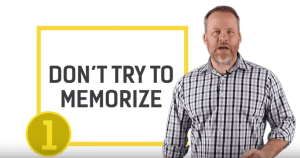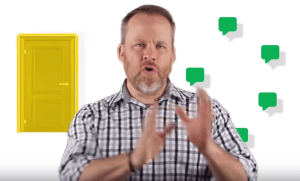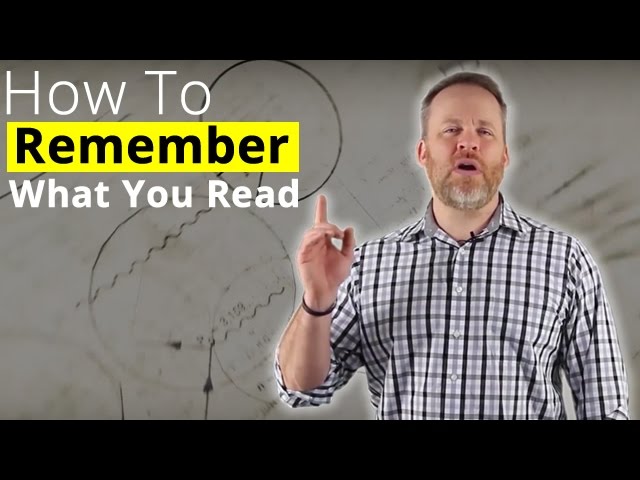Remember What You Read With 5 Easy Steps

- Highlight/Underline Key Words
Don’t try to memorize what you read. Instead, to remember what you read, highlight, underline or take notes of what is important. Understanding and remembering what is important is essential in furthering your ability to process the information that you read.
For example, if you want to remember what you read about a biography of President Abraham Lincoln and you want to remember that he was born in Kentucky and then became the 16th President. “President Lincoln” and “Kentucky” and “16” would be your key words.
Key words are like bullet points, they are easy to remember and they’re crucial information you would need to know to remember and summarize what you’ve read.

2. Use the Mind Palace Technique
This technique works by creating a map in your head of rooms you’re already familiar with, such as your living room or bedroom. This technique requires you to pick five essential object/furniture in that room, such as a table, bed, TV, etc. and transforming these objects/furniture in to mental “files.”
These objects are your mind palace, which holds the data of the information that you have read in the book. This is a strategic technique used to help remember what you read.

3. Turn Whatever You Want to Remember in to a Picture
If you want to remember what you read about President Abraham Lincoln, you can think of a penny, because President Lincoln is on a penny. Then you want to remember that he was born in Kentucky, so you can think of a derby, and pretend that the penny is racing around the derby. Next you want to remember that he is the 16th president, so you picture a car, because 16 is when you can get a driver’s license.
See these pictures as an animated object, action or emotion. When you can relate your five senses in to an animated object, it will make how to remember what you read, much easier.
For example: When you smell a certain perfume, it triggers you to remember someone who used to wear that perfume. You’re linking the scent of the perfume to the person who wears it. The same concept applies when you link a picture to the object/furniture. The picture would be what is useful to help you remember the key word, linking it to the object/furniture you have chosen to help to trigger that memory.

4. Attach those Pictures to The Objects You Have Picked in Step Number 2.
Adding a visual memory to your object/furniture (refer to step number 2) will allow you to remember what you have read when you mentally visualize those objects.
For example: If the first object/furniture you picked using the Mind Palace Technique, was a table, imagine the penny (Lincoln) riding around in the derby (Kentucky) on the table. Then your second object was the refrigerator, so picture, the penny physically driving the car (16) to the refrigerator. You are attaching President Lincoln to the penny, the derby to the state of Kentucky and “filing” these two objects to the furniture you picked, which was the table.
When you mentally visualize yourself entering said room, upon seeing the table, you remember that President Lincoln is from Kentucky, then you shift your mental thought to the refrigerator and immediately picture the car and remember the number 16, triggering your mind to remember that President Lincoln was the 16th President.
These are the steps to the Mind Palace Technique, you’re using the furniture to store data in your mind palace to remember the details of what you’ve read.
On a computer, you save certain documents in to different files that you have labeled, then when you click on the file, it opens up everything inside that is saved under that file. This is the same idea when you are attaching the picture of the penny to the table. The table being the file and the penny being one of the documents saved under that file.

5. Creating a Mental File for Every 5 Points in Every Chapter
If you want to remember what you read per chapter, break the information in to 5 points in a chapter. Pick 5 objects/furniture in one room, attach the 5 points to that furniture and if you want to remember 10 points in a chapter, pick 5 more objects/furniture in a different room to remember 5 more points. If you want to remember 15 points in one chapter, create a third room and pick 5 objects/furniture from that room. You have now used 3 rooms to remember 15 points in that chapter.
You are segmenting the points by creating different rooms for them, in each chapter.

Using these steps will help you to remember all the details you’ve read. It is important to remember what you read, so you can refer back to the information in the future. Perhaps you need to remember what you read so you can perform better academically.
Remembering what you read is a beneficial skill that will save you time, help you to better understand the author of the book, the characters, if there are any and the content of what you are reading. Remembering what you read can and will enhance your vocabulary, as well as crystallize your ideas and trigger your creative imagination. These easy tips can be applied in almost every thing you read and allow you to grow intellectually.
Here’s another article on how to remember what you read:
http://www.businessinsider.com/how-to-remember-everything-you-read-2015-9


